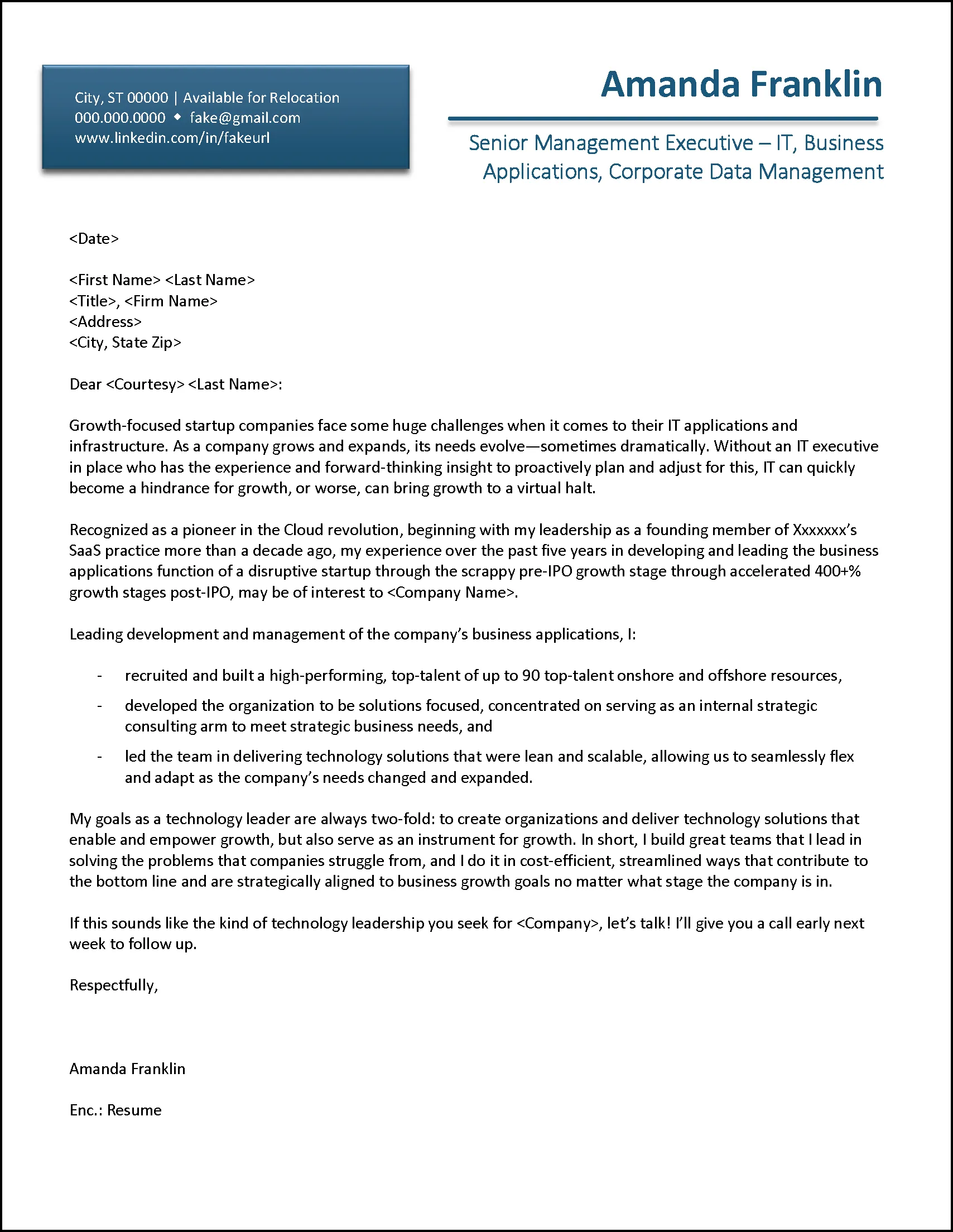Cold calling, despite the rise of digital communication, remains a powerful tool in sales and business development. However, a cold call is often met with resistance. A well-crafted cover letter can significantly improve your chances of success by setting the stage for a more receptive conversation. Think of it as your first handshake, a crucial introduction before you even pick up the phone. It offers an opportunity to connect with a potential client, and it is crucial to create one that captures their attention.
What is a Cover Letter in Cold Calling?
A cover letter in the context of cold calling is a brief, personalized document you send before or alongside your phone call. It serves as an introduction, providing context for your call and explaining why you are reaching out. The goal is to pique the recipient’s interest and make them more likely to take your call. It’s your chance to introduce yourself, your company, and the value you bring. A cover letter can be delivered via email, or even sent through the postal service, depending on your strategy and the prospect’s preferences.
The Importance of Cover Letters in Cold Calling
The primary role of a cover letter is to boost the effectiveness of your cold calling efforts. It prepares the recipient, reducing the likelihood of them dismissing your call immediately. A well-written cover letter can significantly enhance your chances of getting through to the decision-maker and initiating a meaningful conversation. It also gives you an opportunity to establish credibility and showcase your understanding of their needs before you even speak with them. Furthermore, a cover letter allows you to control the first impression, conveying a professional image that can set you apart from the competition, in a cold calling setting.
Cover Letter for Cold Calling Structure
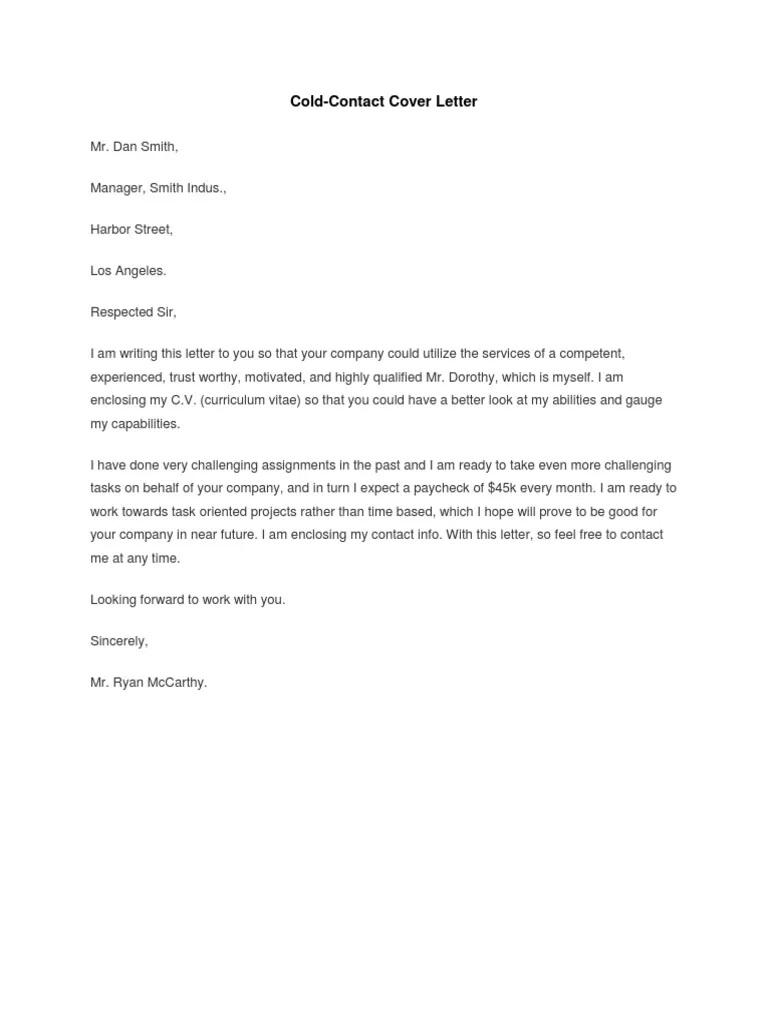
Structuring your cold calling cover letter effectively is crucial for capturing your prospect’s attention and conveying your message clearly and concisely. A well-organized structure helps to guide the reader through your key points and increases the likelihood of them understanding the value you offer. Each part plays a vital role in making your letter persuasive and ultimately leading to a successful cold call.
Contact Information
Start with your contact information, including your name, title, company, phone number, and email address. This allows the recipient to quickly identify who you are and how to reach you. Including a professional-looking email address and your direct phone number adds credibility and makes it easy for them to contact you if they are interested.
Opening Statement
Your opening statement should immediately grab the reader’s attention. Briefly introduce yourself and your company, and clearly state the purpose of your outreach. Personalize your opening by mentioning something specific about their company or a shared connection. This shows that you have done your research and are not sending a generic message.
Value Proposition
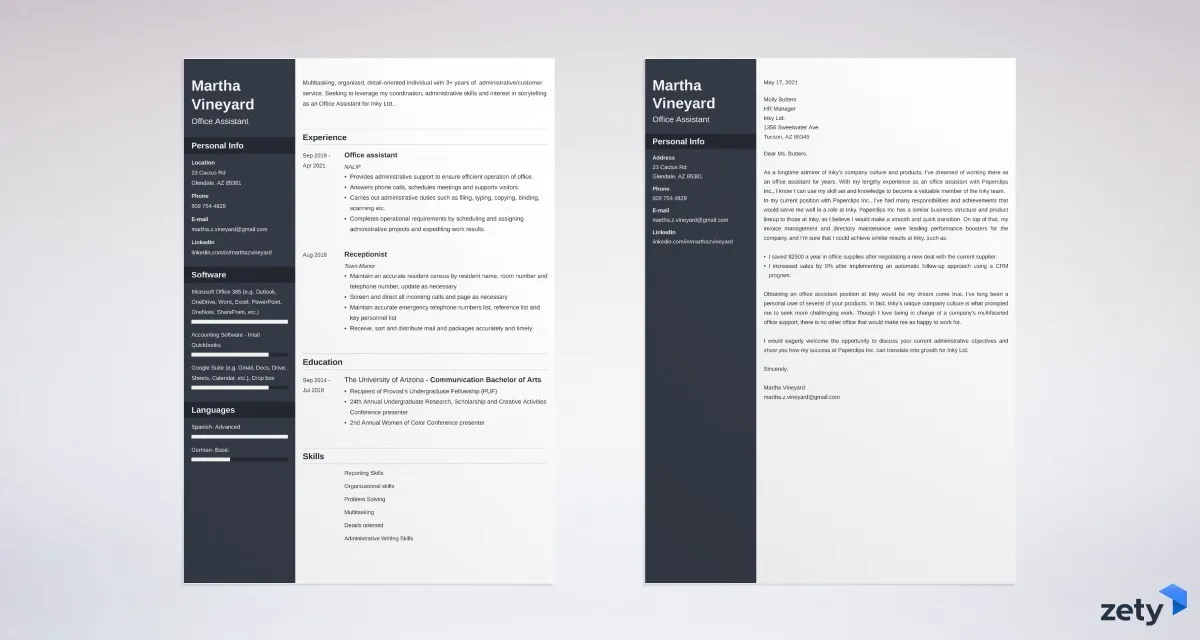
The value proposition is the heart of your cover letter. Clearly articulate the benefits your product or service offers and how it can solve the prospect’s problems or improve their business. Focus on their needs, not just your features. Use concise, impactful language and quantify your value whenever possible, such as by using data or statistics.
Call to Action
End with a clear call to action, specifying what you want the recipient to do. For example, you might request a brief call, offer to send additional information, or invite them to visit your website. Make the action easy and straightforward. Provide your phone number again and suggest a specific time to call.
Formatting Your Cold Calling Cover Letter
The formatting of your cold calling cover letter plays a significant role in its effectiveness. The look and feel of your cover letter will influence the reader’s perception of your professionalism and the credibility of your message. Clean formatting not only makes your letter visually appealing but also aids in readability, allowing your key messages to stand out. Proper formatting ensures that the recipient can quickly grasp the essence of your proposal.
Keep It Concise
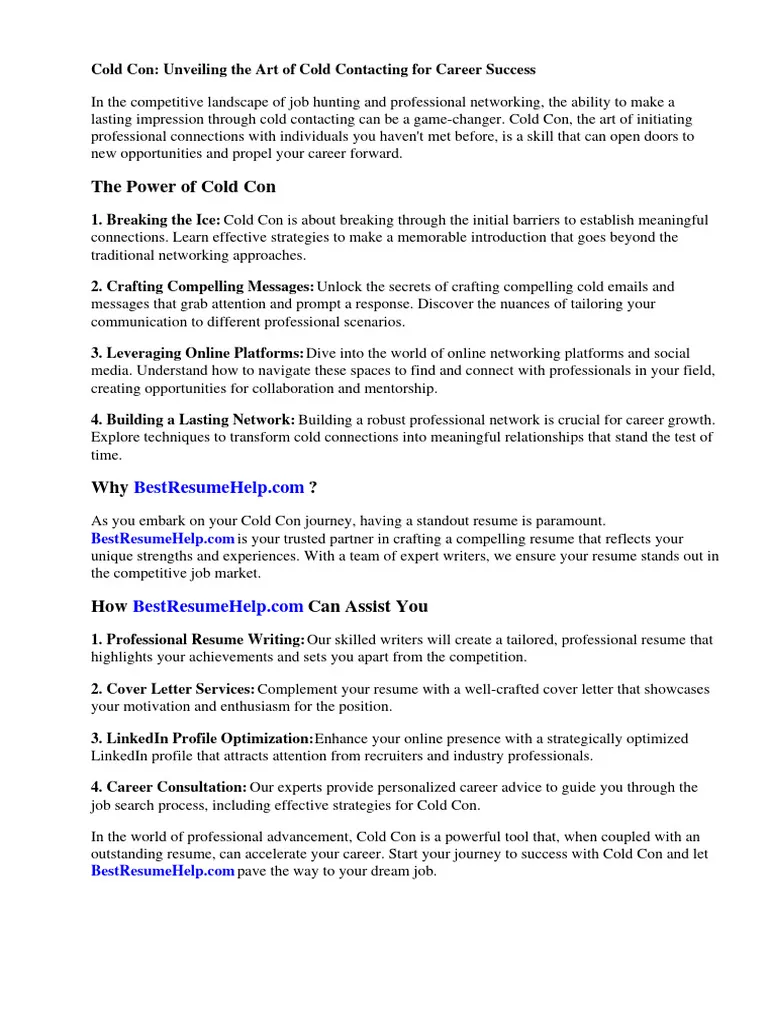
Keep your cover letter brief and to the point. Aim for a maximum of one page, and ideally, aim for under 300 words. Respect your prospect’s time by avoiding unnecessary details. Focus on the most important information that will entice them to take your call. Use short paragraphs, bullet points, and white space to improve readability.
Personalize the Letter
Tailor your cover letter to each prospect, including their name, company name, and specific details about their business. Generic, mass-produced letters are easily identified and often discarded. Demonstrate that you have done your research and understand their needs by referencing their recent projects or challenges. Personalization significantly increases the likelihood of getting a positive response and making your cold calling effort more effective.
Proofread Carefully
Proofread your cover letter meticulously for any grammatical errors or typos. Errors can damage your credibility and undermine your message. Use a grammar checker and have a colleague review your letter before sending it. Ensure the tone is professional and that the language is clear, concise, and free of jargon or overly complex sentences.
Best Practices for a Cover Letter in Cold Calling
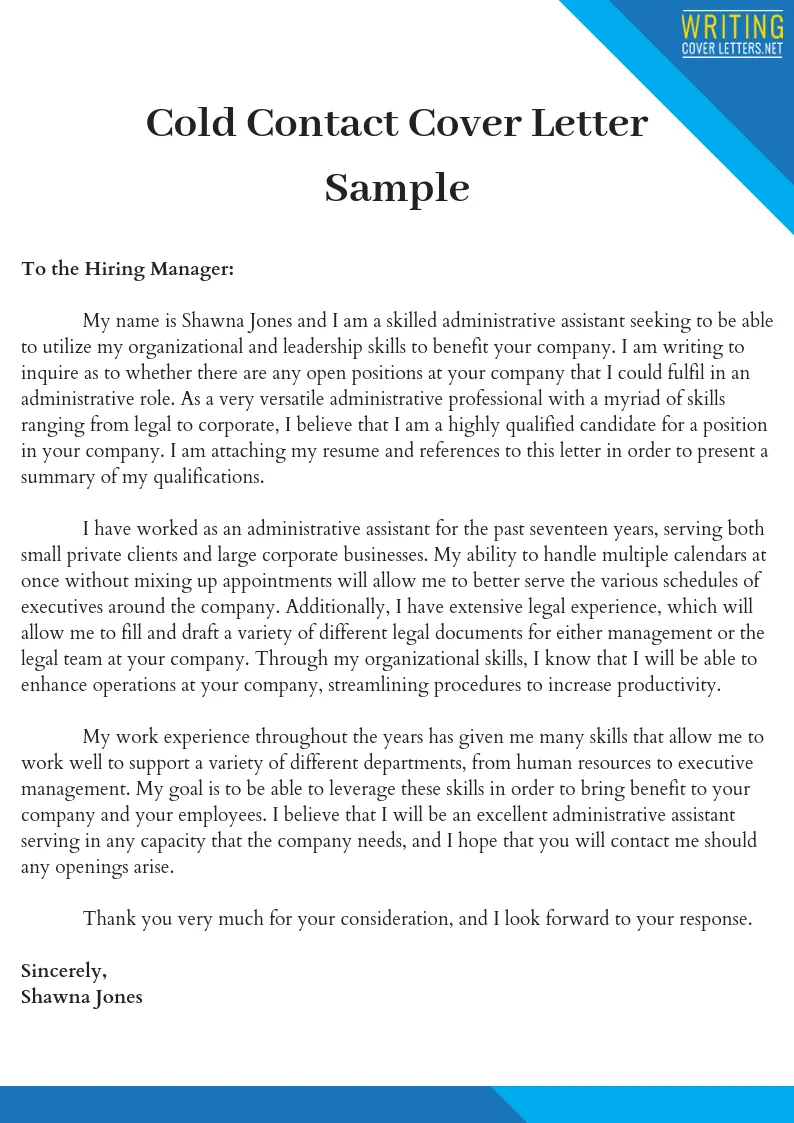
Implementing best practices can maximize the effectiveness of your cold calling cover letter. These practices encompass research, highlighting value, and tracking results, ensuring that your cover letter is well-received and contributes to the success of your cold calling campaigns. By adhering to these guidelines, you can enhance your chances of engaging with potential customers and growing your business.
Research Your Prospects
Thoroughly research each prospect before crafting your cover letter. Understand their business, industry, and challenges. Use LinkedIn, their company website, and other online resources to gather information. This knowledge will allow you to tailor your message, demonstrate your understanding, and address their specific needs effectively. The more you know, the more likely you are to capture their attention.
Highlight Key Benefits
Focus on the key benefits your product or service offers, rather than listing features. Explain how you can solve their problems, improve their efficiency, or increase their revenue. Use clear, compelling language that highlights the value proposition. Quantify your results whenever possible. Use data and metrics to illustrate the impact of your offering. Focus on what they will gain, not just what you offer.
Track Your Results
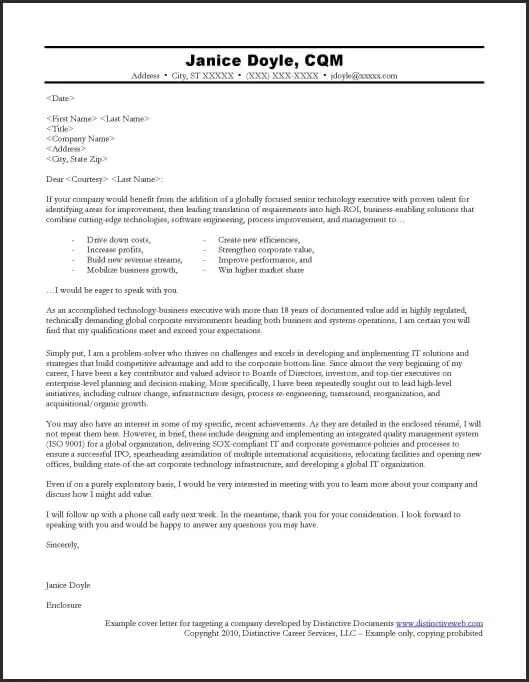
Track the performance of your cover letters to measure their effectiveness. Keep a record of the response rates, the number of calls scheduled, and the ultimate conversion rates. Analyze the data to identify what’s working and what’s not. Make adjustments to your language, structure, or targeting based on your findings. Tracking your results helps you continuously improve your approach and optimize your cold calling strategy.
Crafting an effective cover letter for cold calling is crucial for making a positive first impression and increasing the likelihood of securing a meaningful conversation. By following the structural guidelines, formatting tips, and best practices, you can create a cover letter that not only grabs attention but also provides value. Always prioritize personalization, concise communication, and a clear call to action. With these steps, you will be able to make your cold calling strategy a success.
